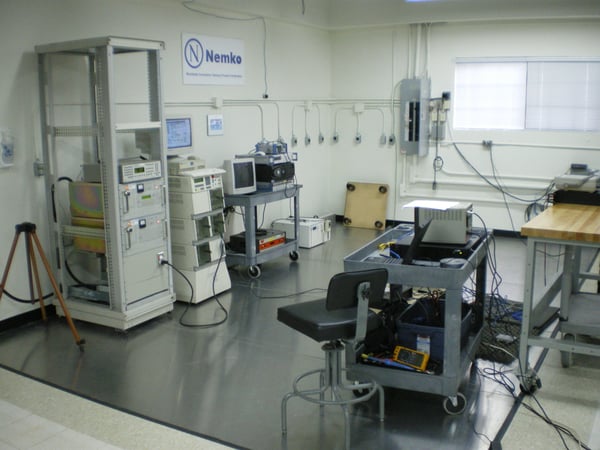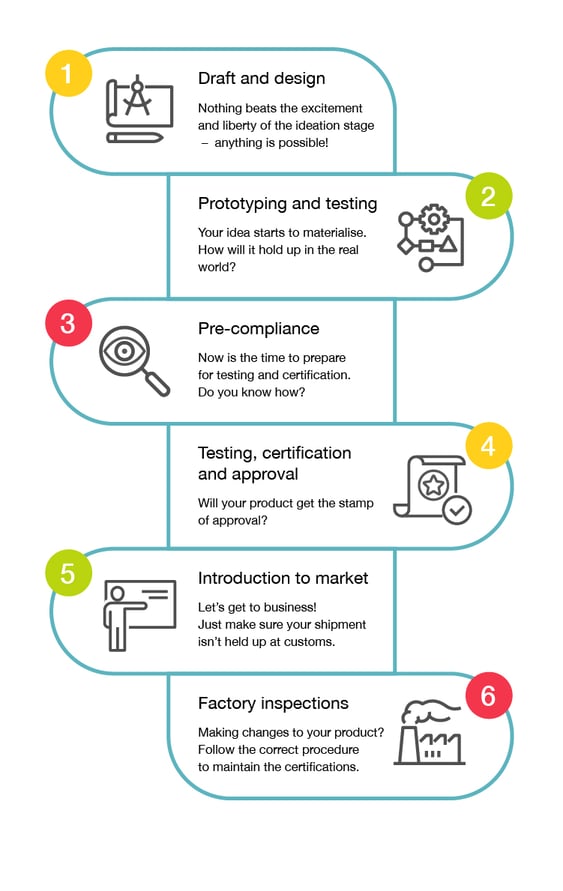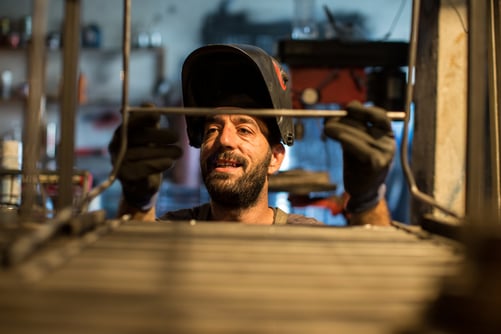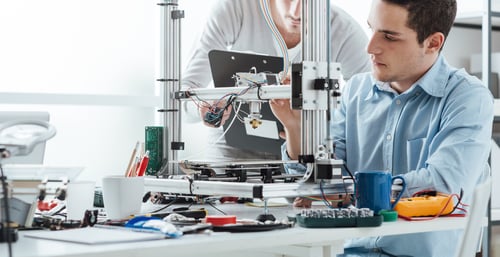 Testing, certification and approval
Testing, certification and approval
Having passed the pre-compliance stage in style, now it’s time to get physical. Your products need to comply with standards and safety requirements in the industries and markets relevant to your business. Such compliance will be very beneficial, ensuring your way to the market and, ultimately, to your results. The order of events is as follows:
Testing –> Certifications

Product Testing – Preparing For The Real World
Testing consists of four stages:
- Test planning
- Project management
- Safety testing
- EMC testing
There are industry specific requirements within each of these but for the purpose of this article, we will cover the general bits.
Read more about specific testing requirements here.
Test planning
“Failing to plan is planning to fail”
Test planning always takes place before the testing starts and consists of preparation and planning of the testing schedule. This ensures your testing project is performed in the best possible manner. Test planning can be performed well in advance and can identify the need for detailed preparations, requirements for sample handling and cost estimates.
This can include the specific tests that the product requires, as well as conducting the tests at the appropriate stage of the product development cycle.
Did you know? Test planning can be performed for all of Nemko’s product testing services.
Project management
The objective is to get the project securely completed on time, or with minimum delays. Project management is an important tool for keeping a project on track at all times so as to secure a fast and efficient product delivery to the market. It’s important to stay informed about the progress of the project at all times – as well as different possibilities to get the project moving again, should you face any holdups.
Safety testing
«Safety first» is a good guiding principle, and it’s certainly a non-negotiable part of product testing. Products are typically subject to a wide range of safety tests, depending on the product type and applications of use. You can find an overview of Nemko’s services within safety testing here.
EMC testing

If you think it’s challenging to focus in an open space office, just imagine how radio transmitters and receivers feel. We’re surrounded by electromagnetic fields and impulses, which to electronics represent constant disturbances. Whether your product will be able to function properly in any given context, largely depends on its ability to withstand electromagnetic interference.
EMC testing is performed to ensure that your product meets territorial and industry-specific requirements.
Certification or approval
As soon as the test results are in, you’ll be eager to move on to the next step: Certification or approval (they are used interchangeably). Now, the general order of events is as follows:
- The project manager reviews the test results.
- The testing body fills out the application for approval.
- They submit the application to the agency (electronically).
- Pending approval, the testing body follows up on the agency, checks progress.
- The agency comes back with the certificate – or they find a non-conformity.
- The agency provides the artwork for your product label
Can you find any of the following marks on your phone? Your laptop? Your toaster?

This is what we mean by “artwork” (6). It’s basically a stamp of approval, and it is a crucial piece of information to have in place as you get ready to introduce your product to market.


 Each step offers up its own set of hurdles and if you don’t prepare in time, you run the risk of stalling at critical stages. Countless otherwise viable products never made it to market because the development teams were unaware of what was required; and when they finally found out, it proved too late or costly to make the necessary adjustments.
Each step offers up its own set of hurdles and if you don’t prepare in time, you run the risk of stalling at critical stages. Countless otherwise viable products never made it to market because the development teams were unaware of what was required; and when they finally found out, it proved too late or costly to make the necessary adjustments. 





